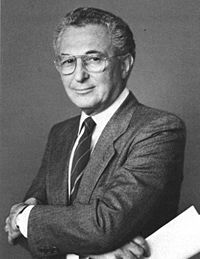The History of Hair Transplant
The issue of baldness has affected humanity as recorded history has made notes about peoples’ lack of hair. Only in the past 200 years have we been able to do something about the loss of our hair through the hair transplant. In 1822, German medical school students and Professor Unger successfully removed hair from one point on a scalp and transplanted it in another location. No longer did we have to go bald and do nothing about it.
By the end of the 19th Century various procedures including grafts and hair-bearing skin flaps were used to treat traumatic alopecia. In addition to these medical procedures, traveling salesmen promoted tonics that could regrow hair, but these sold dreams more than actual hair.
It wasn’t until the 1930s that we begin to see the foundations of modern medicine’s answer to baldness in Japan with the work of Dr. Okuda. This dermatologist created a grafting technique that used round sections of hair-bearing skin gained from a punch technique focused on helping burn victims regrow hair. Another Japanese dermatologist, Dr. Tamura lessened the size of the grafts to one to three hairs for better results. These techniques were lost during World War II, but they were soon rediscovered and used in the West.
 In the United States by 1952 as Dr. Norman Orentreich showed the relationships of ‘donor dominance’ and ‘recipient dominance’ in successful transplant surgeries. Successful surgery depended on the donor being more dominant than the recipient, but American studies also showed that baldness was an inherited condition that could be treated with transplants. According to the research of donor dominance, it was a principle that expressed why transplanted hair would continue to present the characteristics of the hair from where it was taken. If taken from the side of the scalp, the hair will continue to grow as hair from the side of the scalp, but it would continue to grow in areas of the scalp that were thinning or completely bald.
In the United States by 1952 as Dr. Norman Orentreich showed the relationships of ‘donor dominance’ and ‘recipient dominance’ in successful transplant surgeries. Successful surgery depended on the donor being more dominant than the recipient, but American studies also showed that baldness was an inherited condition that could be treated with transplants. According to the research of donor dominance, it was a principle that expressed why transplanted hair would continue to present the characteristics of the hair from where it was taken. If taken from the side of the scalp, the hair will continue to grow as hair from the side of the scalp, but it would continue to grow in areas of the scalp that were thinning or completely bald.
The limitation on this technique was the lack of a natural look to transplanted hair.
The large grafts used during the 1970s became known as ‘plugs’, and hair plugs a negative term for a hair transplant. Limitations on technology and procedure had drastic, sometimes crude results for Orentreich’s patients, and this created a social stigma associated with hair transplants. This stigma was mainly due to Orentreich using Okuda’s methods rather than Tamuda’s more modern approach.
These new views of baldness created a holistic treatment as the complete issue was beginning to be understood in the 1960s. Surgical techniques focused on moving hair-bearing flaps to bald areas, using tissue expanders to help scalp reconstruction in bald areas and finally using bald reduction scalp surgery to remove bald scalp and replace it with hair bearing scalp tissue. These techniques still could not have the desired natural look.
These techniques set the foundations for modern surgical practices that focus on safety and natural looking results. Moving away from easily detected plug transplants, advances in microsurgical techniques, such as micro grafting, follicular unit transplantation and follicular unit extraction and instruments have resulted in hair transplants that cannot be easily detected.
By 1984, micro-grafts used smaller grafts rather than one long strip resulting in a more natural look. Micro-grafts were an improvement, but they were not perfect. By 1994, Follicular Unit Transplantation (FUT) was used by Drs. Bernstein and Rassman requiring follicular units from a donor strip for a better result, but requiring more time and surgical skill. By 2000, FUT was the preferred method for hair transplants.
In 2005, Follicular Unit Extraction (FUE) became the current method of hair transplants that used a very tiny punch from a donor strip until the proper number of follicles were obtained. FUE became more widely used, particularly as technology improved allowing for Robotic FUE using an ARTAS Robot for more precise and accurate results for follicle harvesting. The Robot has also been used in the transplantation process for better placement of follicles during implantation and in the recovery periods of identifying scar areas.
Hair transplants have also been coupled with new medications like Propecia in order to slow or even stop hair loss for even better results. In the past 30 years, tremendous advances have been made in stopping hair loss and regrowing hair. As the procedures improve daily, the next 30 years will be very interesting to see how technology and practice will progress.

